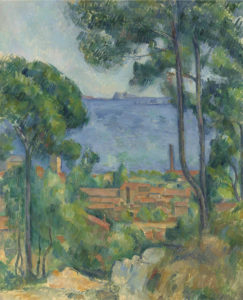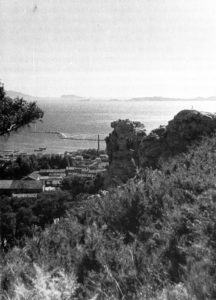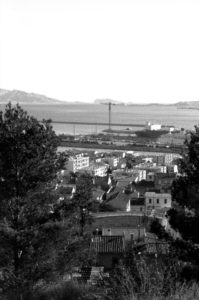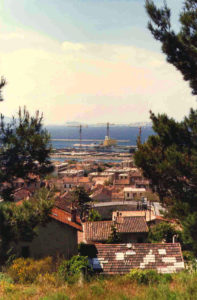R531 – Vue sur l’Estaque et le Château d’If, 1883-1885 (FWN193)
Pavel Machotka
(Cliquer sur l’image pour l’agrandir)
The happy Vue sur l’Estaque et le Château d’If is seemingly effortlessly realized in touch (it is inclined for the vegetation, horizontal for the water, and barely noticeable in the sky and the roofs), and bathed in a warm, afternoon light — and it is very finely balanced in colors. Even though Cézanne used three groups of saturated colors two of which would normally compete for attention—the orange-reds with the blues – he found ways to make them work in concert. The reds would typically present the greatest challenge, especially when isolated in the center as here, but he has set them in the middle of equally saturated greens, their color complementaries, and given them enough yellow to make them equally complementary to the blues. Here and there he has spread flecks of orange-red, in unexpected places, to bring the tight group of roofs out of its isolation. He similarly introduced flecks of green into the blues, and blues into greens. But at the point of contact between the branches and the sky, he has also chosen to handle the transition between the greens and the blues by introducing a dark blue. It is one of many devices for keeping the canvas surface unified, but it is also a record of a visual experience we can duplicate ourselves when looking at trees against the sky: with eyes half closed, looking at the sky between groups of leaves, we will see a darker blue at the edges, and of course the darkest blue where the spaces between the leaves are smallest.
The sense of happiness here is almost palpable, yet it is the effect of the most careful balancing of colors and placing of touches.
Adapted from Pavel Machotka, Cézanne: The Eye and the Mind.
Le site vers 1935 et aujourd’hui :





